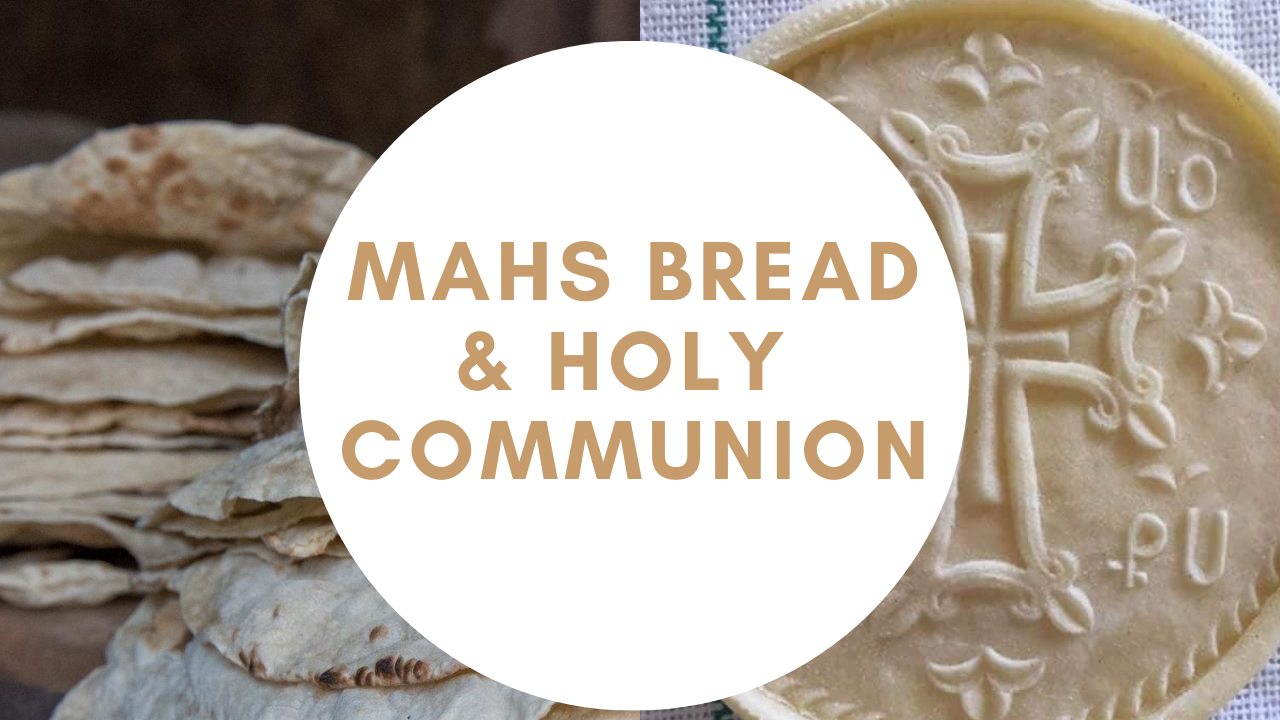
At the beginning of the Divine Liturgy, after the curtain has been closed for the first time, the deacon presents a tray of unleavened bread to the priest, including several small, round loaves called “nshkhar.” The priest blesses the bread, then selects one of the nshkhark, which he places on the paten (maghzman). This is the bread that will be the focus of all of the prayers of the Divine Liturgy, and which will be distributed in Holy Communion. We believe that by God’s grace, what we receive in Holy Communion is not mere bread, but the life-giving body of Jesus Christ.
The remaining blessed bread is put aside. This mahs, which means “portion” in Armenian, is offered to the faithful at the end of the Divine Liturgy. It is especially intended for those who, for some reason were not able to receive Holy Communion. It is often taken home to loved ones who were unable to come to the Badarak to receive Communion. It becomes their “portion” of the day’s Eucharistic meal.

